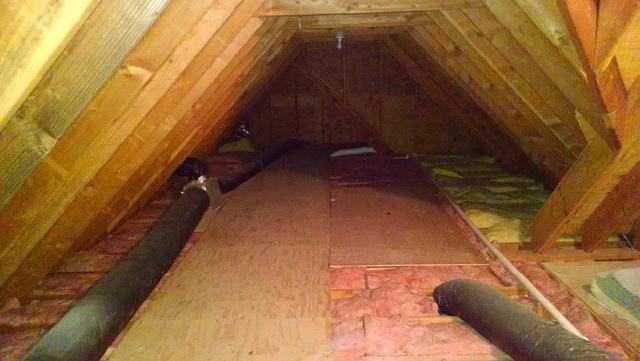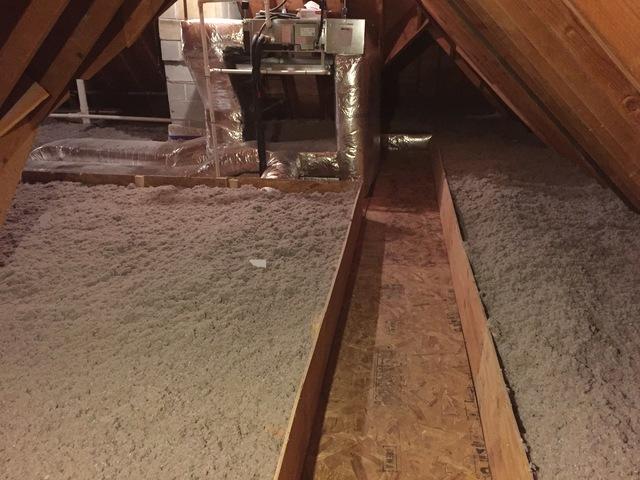
Poorly Insulated Attic
Heat passes all too easily through this poorly insulated attic. In the winter, heated interior air rises naturally by convection and escapes into the attic through numerous uninsulated crevices, holes, and spaces. Conductive heat loss through the cold ceiling makes rooms directly beneath the attic even colder. The problem reverses on hot summer days, as attic temperatures rise to the 140° range and heat moves into your living space.

Old Attic Insulation
The fiberglass insulation was insufficient to keep the warm air from escaping into the attic from the house in the winter. The warm air in the attic warmed the roof, which melted the snow. As a result ice dams formed which led to roof leaks. In order to prevent this from continuing, we needed to seal air leaks and improve the attic insulation coverage.

Attic Air Sealing
The first step to this attic upgrade is to air seal the leaks, filling all holes, gaps and seams with expanding polyurethane foam. More exfiltration, or interior air leaking outside, occurs through the attic than anywhere else in the house.

Insulated Catwalk
In order to allow access to all areas of the attic, we also installed a catwalk. Beneath the plywood is our SilverGlo insulation. This rigid foam board never loses insulating value by settling or compressing. Foam boards shed water instead of soaking it up like fiberglass insulation. In addition, SilverGlo will not support mold or provide a home for mice, insects and other pests.

Blown Cellulose Insulation
After the attic has been air-sealed to minimize air leaks, it usually takes a day or less to complete an attic insulation upgrade using blown-in TruSoft cellulose. Our blown cellulose is a surprisingly affordable, super-green loose-fill insulation treated for resistance to fire, insects and mold. Air-sealing the attic, combined with an insulation upgrade, cut this home's heating and cooling costs by up to 40%, in addition to solving the ice dam and roof leak issues.


